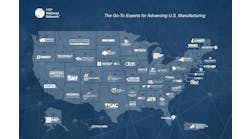US Companies in China Face Greater Scrutiny as Relations Erode
Officials recently showed up at the Chinese plant of a U.S. company to perform a spot inspection of its fire preparedness. They fined the plant after finding a minor issue with its extinguishers and warned the manager they’d be back. It was the first time it had happened in the company’s 15 years in China.
This type of bureaucratic attention to U.S. firms in China is on the rise, and it highlights the convergence of two major risks for companies with operations or suppliers there.
The first stems from rapidly worsening bilateral tensions as the United States heads into a period of political volatility that’s going to last at least until the November election and probably beyond. The pandemic has triggered a renewed slump in ties after things appeared to be stabilizing in the wake of a stopgap trade deal agreed to last year.
As China attracts increased attention in the presidential election campaign, it’s hard to see tensions easing in the near term. As a result, the Chinese government may continue to increase regulatory supervision of U.S. companies.
Even before this year’s downward spiral, a third of U.S. companies in the 2019 U.S.-China Business Council Survey reported increased scrutiny from Chinese authorities amid rising trade tensions. Some 41% reported tighter Chinese enforcement of regulations and 47% cited more licensing and regulatory approvals.
The other risk relates to how the Covid-19 shutdown has left U.S. firms more vulnerable than ever to irregularities in their Chinese plants and supply chains. The restrictions, health risks and costs involved in travel have made it virtually impossible for U.S. managers to visit their sites in China. That’s leading to a drastic loss of oversight of their Chinese operations at a time when the consequences of non-compliance could be particularly severe.
The compliance risks fall into two categories. Chinese managers on the ground often have the best intentions but may let things slide if they don’t share the same standards and risk awareness as HQ. They may simply be viewing risk through a local lens, where the consequences of non-compliance often aren’t as severe for local companies as they can be for foreign firms.
Problems with lack of oversight can range from missing important filings and declarations, raising the risk of future liabilities; missing important IT security steps; or the local management having a looser approach to customer payments, leading to unnecessary cash-flow pressure. It can also result in missed opportunities, such as failing to maximize Chinese relief funds available for COVID-19.
In the second category, poorly supervised local managers may cut corners or commit fraud for their own gain. U.S. companies need to ensure their inventory levels are complete and accurate, that the quality of input materials is being maintained, and that there are no gray-market sales or ghost employees.
The consequences of these problems range from small to severe. Lax oversight could also lead to a fall in product quality and customer recalls. Or it could just become a steady drain on resources and efficiency. In a worst-case scenario, Chinese authorities could shut down a plant, cancel a U.S. company’s license, or levy big fines.
There are three main steps that companies can take to address the oversight problem.
1. Get boots on the ground. Zoom just isn’t going to cut it for this kind of work. Companies need to be able to see source documents, open drawers, and speak to people face-to-face in order to get a full picture of what’s going on and how to course-correct. One option is to enlist a trusted third-party partner with feet on the ground in China and strong connections back to the U.S. to provide independent input without undue local influence.
2. Implement a strategic compliance and risk dashboard. This enables you to get a comprehensive picture of the critical filings and risk pathways related to compliance and to work through them in a systematic way. It should also be used to ensure you have the proper source documentation to back up your answers. A China-based partner can provide local assistance by uploading to the home office copies of filings to government regulators in China. They can also confirm that products and supplies are being handled properly.
3. Adjust timelines according to the environment. Companies dependent on Chinese operations or suppliers should adjust their targets to reflect the volatility of the times. Anything involving a government agency in China could take longer than usual, so build that into your promises to customers and partners.
I wish I could say this was a temporary storm that will blow over in next few months. But the reality is that the volatility and tensions in U.S.-China relations could last deep into next year and beyond. Meanwhile, it remains impossible to predict how soon the Covid-19 crisis will subside enough to allow normal business travel to resume.
Lou Longo is a partner and international consulting practice leader at Plante Moran.




